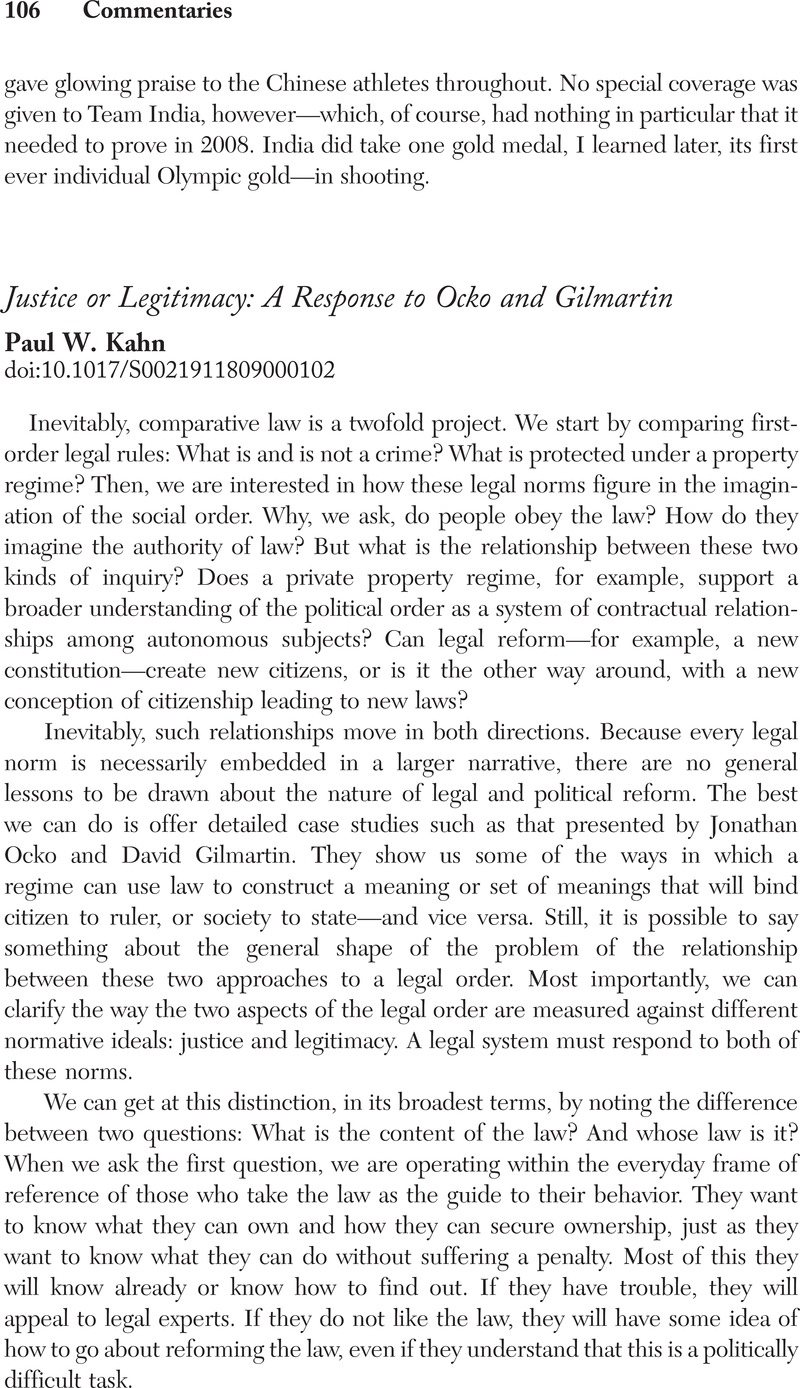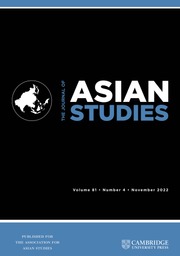Article contents
Justice or Legitimacy: A Response to Ocko and Gilmartin
Published online by Cambridge University Press: 27 January 2009
Abstract

- Type
- Commentaries
- Information
- Copyright
- Copyright © The Association for Asian Studies, Inc. 2009
References
1 Tracing those details is the project I take up in Legitimacy and History: Self-Government in American Constitutional Theory (New Haven, Conn.: Yale University Press, 1992) and in The Reign of Law: Marbury v. Madison and the Construction of America (New Haven, Conn.: Yale University Press, 1997).
2 The distinction of the subject of sovereignty from the content of law is at the center of my analysis in Putting Liberalism in Its Place (Princeton, N.J.: Princeton University Press, 2004), 250–58.
3 On the relationship of violence to political meaning, see Kahn, Paul W., Sacred Violence: Torture, Terror and Sovereignty (Ann Arbor: University of Michigan Press, 2008)CrossRefGoogle Scholar.
4 A fuller account of Chinese law within the party-state of the twentieth century would also need to consider how law played similar or dissimilar roles in the Soviet Union.
- 2
- Cited by


